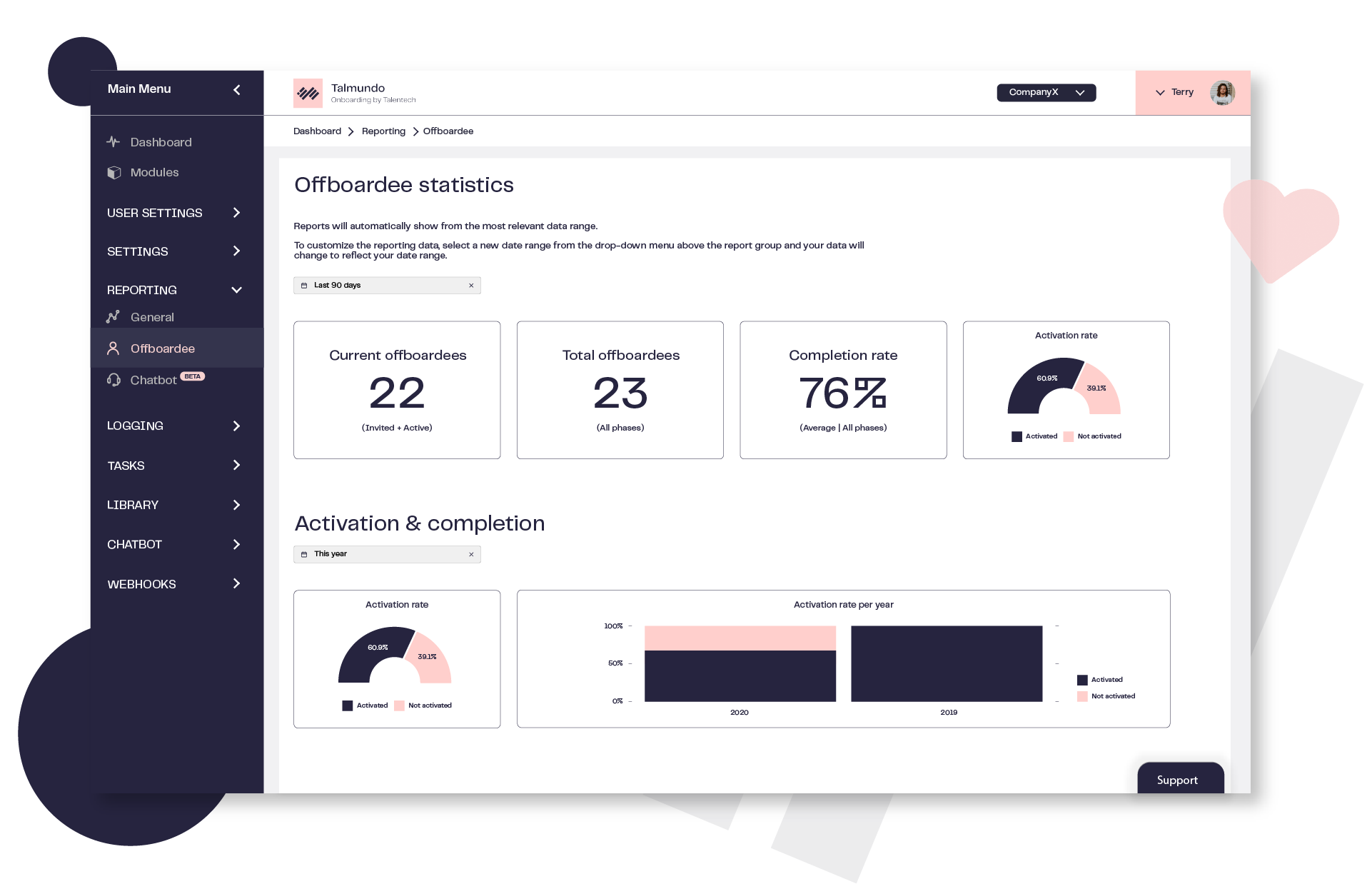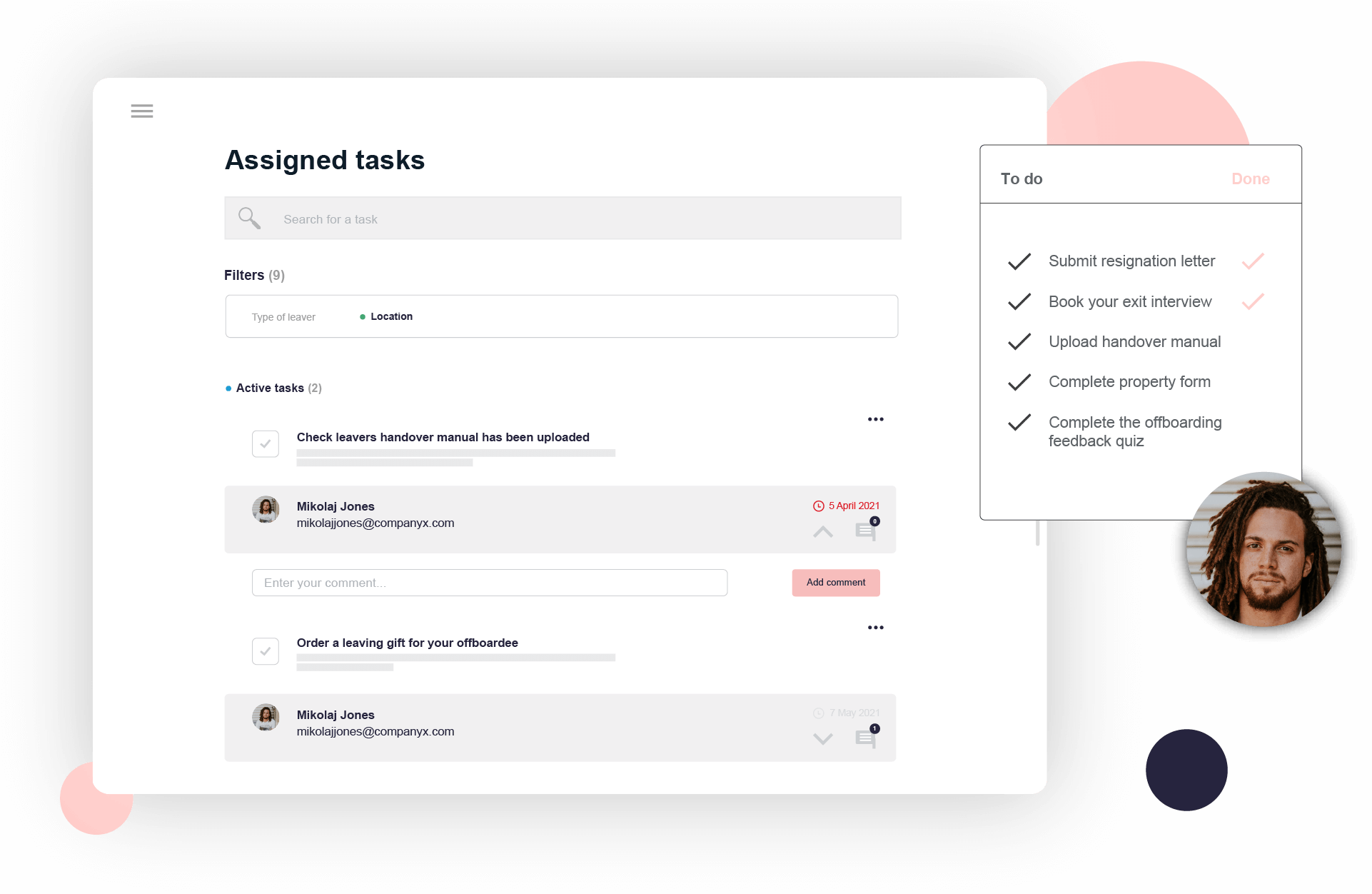A successful offboarding program will safeguard key organizational knowledge, positively impact future recruitment efforts, transform departing employees into brand ambassadors, and more.
But here’s the thing, there is almost no evidence to suggest that organizations anywhere are tracking the success of their exit management programs.
Many measure employee churn, gather exit interview data, or keep track of the length of time it takes for an employee to be effectively ‘removed’ from company systems - but the process of assessing whether or not an offboarding program is having the desired effect is basically nonexistent.
We’re here to change that!
By identifying exactly what to measure, creating systems to capture that data accurately, and applying your insights, you can upgrade your offboarding and set your business up for future success.
Let’s dive in.
 |
Why do you need to measure the success of your offboarding program? |
Before we get stuck into HOW we measure offboarding, let’s cover the WHY.
Measuring your offboarding journey means capturing learnings and key measurements, both positive and negative, from your departing employee's exit process and applying them to future leavers for increased business performance.
Because offboarding is a new term for a more structured approach to exit management, most organizations are busy implementing offboarding programs without a thought to how they will measure them down the track.
This is a mistake!
Without concrete evidence of where offboarding is creating a positive impact, or why the system may be breaking down, there’s no way for HR to make targeted change, which means no opportunity for improvement.
Having hard data puts HR in the driver's seat, allowing them to pinpoint the highs and lows of the offboarding experience and make informed decisions.
 |
How do you measure offboarding? |
There are many different metrics you can focus on to gauge whether or not your offboarding program is successful. Some are more concrete indicators tied directly to the leaving process. Others are more intangible and can reflect both the offboarding journey and the wider employee experience.
Today we’ll be focussing on 3 concrete indicators that give HR tangible data they can use to take immediate action:
 |
#1: Offboarding Score |
Your offboarding score is the average rating departing employees give your exit management program. This score should take your entire program into account - from the level of support provided to the usability of any digital infrastructure you have in place.
Organizations that measure this usually use anonymous surveys to find out how leavers felt about their offboarding experience. There should be an option to rate the experience and give details that explain the reason for their rating.
HR can then aggregate this data to create a running ‘offboarding score’.
This score allows your organization to track how your offboarding journey is performing over time and pinpoint where (and when) things are going wrong.
How Talmundo does it
Our digital offboarding software uses timed pulse checks to keep tabs on a leaver’s offboarding experience. At critical moments in the leaving journey, Talmundo will prompt offboardees to fill in a short, anonymous pulse survey.
Survey findings are automatically added to the back-end data dashboard giving HR the ability to see how their journey is being scored in real-time. For more info, admin users can take a deeper dive into individual surveys to zoom in on problem areas.

 |
#2: Offboarding Engagement Rate |
Your offboarding engagement rate indicates how often leavers are engaging with your offboarding journey. As with onboarding, calculating engagement can be difficult, so you need to get creative. We’ve seen offboarding engagement calculated in a few different ways including:
- Taking note of how often leavers log into any digital onboarding tools you may have
- Measuring the percentage of leavers who complete all of their offboarding paperwork
What’s more important here than the method, is your organization's chosen benchmark of success. If you have 5 pieces of crucial offboarding paperwork that need to be completed, then completing 5/5 would be your indication of a 100% engagement rate. If only 2 of those forms are completed, then your engagement rate would be 40%.
Collecting this data over time will give HR a good understanding of whether or not their offboarding program is doing a good job of engaging leavers. They can then take targeted action.
How Talmundo does it
Talmundo’s digital exit management platform can calculate offboarding engagement in a range of ways. It collects data on how many times a leaver logs in and interacts with your offboarding journey. It keeps track of which digital offboarding forms a leaver has completed. And it provides an overall real-time completion score for each leaver.
All this data is automatically displayed in our visual data dashboards, providing a centralized engagement snapshot where HR can easily drill down on specific data points to find out more.

 |
#3: Offboarding Task Completion |
Every offboarding journey involves a series of tasks for your leaver to complete. From attending an exit interview and producing a handover document, to returning company equipment and transferring system access to their replacement - there are 101 things to do.
Measuring the number of tasks completed is an excellent way to see how your offboarding program is performing. If you find the vast majority of tasks are being completed in a timely manner, you can assume your program is performing as designed. If you find many tasks are going unfulfilled, there are likely some problem areas.
The great thing about measuring tasks is that over time, you will begin to see which tasks are frequently being missed - which gives you an excellent place to start when making improvements.
How Talmundo does it
Tasks by Talmundo is a built-in feature of our platform. This powerful system allows HR to create, assign, and manage tasks for all offboarding stakeholders and automate the entire process.
The best part? Tasks has its very own data dashboard that shows what tasks are frequently going unfulfilled, allowing HR to make meaningful changes and improve future processes.

 |
So what next? |
Putting a great offboarding program in place is important, but it’s only half the battle. Without a structured way of measuring the success of your leaver journey, you’re flying blind, making improvements based on assumptions rather than facts.
You don’t need a digital offboarding platform to measure your exit management efforts, but it certainly makes things a lot simpler, saving HR a tonne of time in the process.
Talmundo’s powerful offboarding platform is built to support the 5 components of GOOD exit management with tailored, best-practice features. Inbuilt data dashboards make reporting a breeze and our in-house experts are there to support you at every step.
Sound good? Speak with one of our friendly team members today and get ready to kick-start your offboarding journey!







